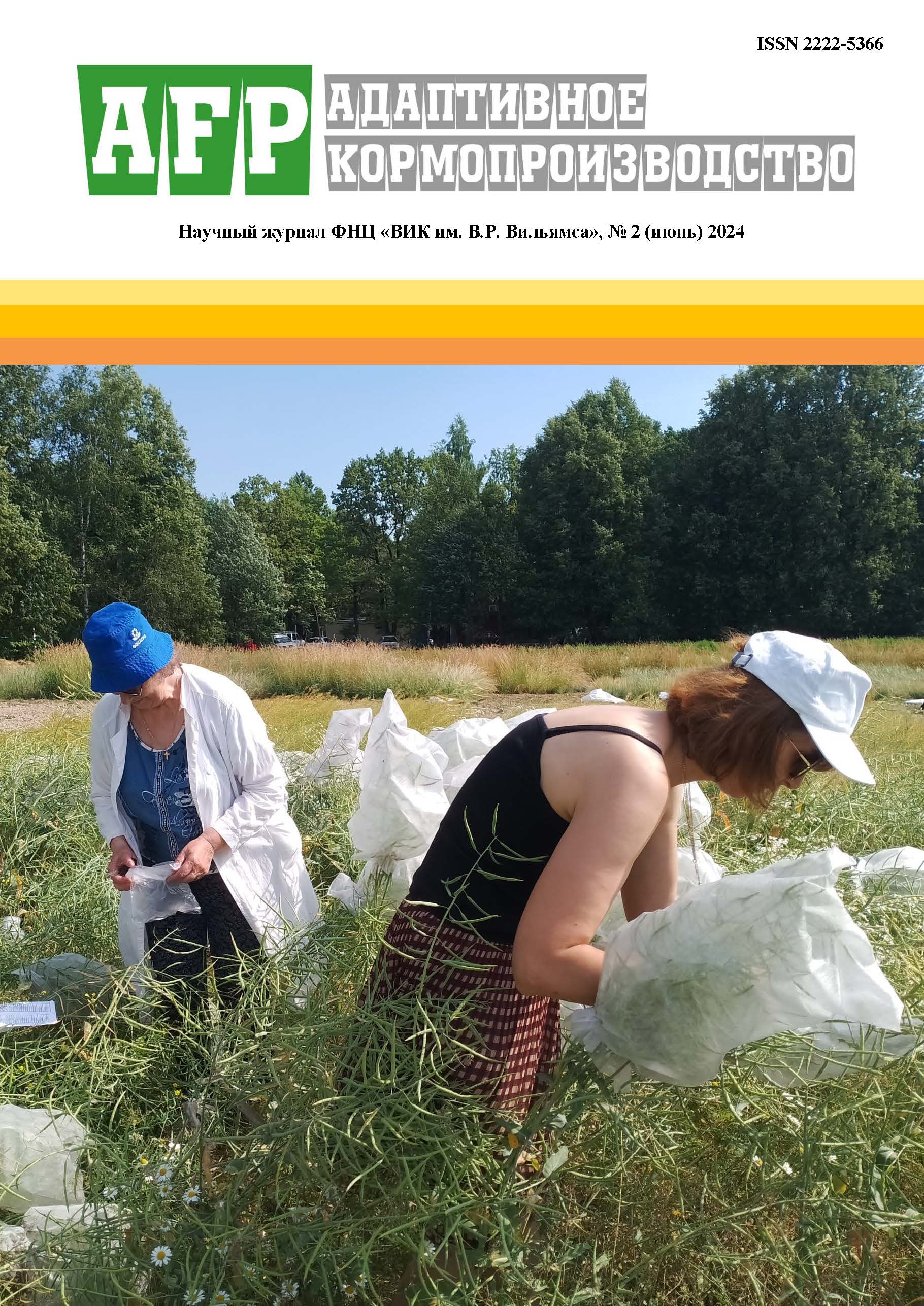Moscow, Russian Federation
One of the ways to increase the dietenergy for cattle snaplage — feed prepared from corn cobs with husk separated from the stalk and crushed. For the Central region of Russia, this is still a rare feed, although very promising. Unlike corn silage, its harvesting requires not only very early hybrids capable of ripening the grain to waxy ripeness before the first frost (approximately mid-September), but also special grain headers for separating the cobs from the stalks. In addition, for the snaplage technology, there are more strict requirements for the degree of grinding of grain, the use of chemical and biological preservatives, and the method of storing and sealing the feed. However, it has advantages over other technologies for preparing feed from corn, in particular corn grain. This is the absence of costs for drying grain, reducing the number of lost cobs, the possibility of using corn hybrids with greater yield potential (increasing the FAO range), harvesting at an earlier date, reducing the impact of adverse weather conditions, compatibility of grain headers with combines for harvesting corn for silage. Our article is devoted to the peculiarities of the technology for preparing snaplage from early ripening corn hybrids in the Central region of the Russian Federation.
fodder production, early-maturing corn hybrids, snaplage, harvesting time, nutritional value
1. Andreev I.V., Duborezov V.M. Plyuschenoe zerno kukuruzy v racionah bychkov pri otkorme // Kombikorma. – 2021. – № 4. – S. 28–30.
2. Bernardes T.F., Daniel J.L.P., Adesogan A.T. et al. 2018. Silage review: unique challenges of silages made in hot and cold regions. Journal of Dairy Science. V. 101. P. 4001–4019.
3. Daniel J.L.P., Bernardes T.F., Jobim C.C. et al. 2019. Production and utilization of silages in tropical areas with focus on Brazil. Grass Forage Science. V. 74. P. 188–200.
4. Beeson W.M., Perry T.W. 1958. The comparative feeding value of high moisture corn and low moisture corn with different feed additives for fattening beef cattle. Journal of Animal Science. V. 17. P. 368–373.
5. Martynova N.M. Tehnologiya proizvodstva kukuruznogo kornazha // Permskiy period : sbornik materialov VIII Mezhdunarodnogo nauchno-sportivnogo festivalya kursantov i studentov obrazovatel'nyh organizaciy, Perm', 17–22 maya 2021 goda. V 3 tomah / Sostavitel' A.I. Sogrina. – Tom I. – Perm' : FKOU VO Permskiy institut FSIN Rossii, 2021. – S. 214–215.
6. Akins M.S., Shaver R.D., 2014. Effect of corn snaplage on lactation performance by dairy cows. The Professional Animal Scientist. V. 30. P. 86–92.
7. Vinogradov I.S., Lazarev N.N. Kompleksnaya ocenka gibridov kukuruzy dlya proizvodstva silosa // Kormoproizvodstvo. – 2023. – № 1. – S. 26–30.
8. Klimenko V.P., Belomozhnov T.D. Obzor rynka rannespelyh gibridov kukuruzy dlya proizvodstva fermentiruemyh kormov v Central'nom regione Rossiyskoy Federacii // Adaptivnoe kormoproizvodstvo. – 2023. – № 2. – S. 48–54. – URL: https://www.adaptagro.ru/images/journals/ afp2306.pdf. (Data obrascheniya 14.03.2024).
9. Jacovaci F.A., Salvo P.A.R., Jobimet C.C. et al. Effect of ensiling on the feeding value of flint corn grain for feedlot beef cattle: A meta-analysis. Revista Brasileira de Zootecnia. 2021. V. 50. P. 1–8.
10. Gusmão J.O., Lima L.M., Ferraretto L.F. et al. Effects of hybrid and maturity on the conservation and nutritive value of snaplage. Animal Feed Science and Technology. 2021. V. 274. R. 1–11.
11. Gosudarstvennyy reestr selekcionnyh dostizheniy, dopuschennyh k ispol'zovaniyu. T. 1. «Sorta rasteniy» (oficial'noe izdanie). – M. : Rosinformagroteh, 2022. – 646 s.
12. Vinogradov I.S., Lazarev N.N. Urozhaynost' i pitatel'nost' raznyh gibridov kukuruzy pri uborke na silos v fazu molochno-voskovoy spelosti // Agropromyshlennye tehnologii Central'noy Rossii. – 2024. – № 1(31). – S. 69–76.
13. Pordeus N.M., Oliveira E.R., Takiyaet C.S. et al. Snaplage with microbial inoculant or organic acids has altered fermentative losses, microorganism counts, starch content and improves feed intake, digestibility and modulates ruminal fermentation in lambs. New Zealand Journal of Agricultural Research. 2023. V. 66. No. 4. P. 349–365.
14. Ferraretto L.F., Taysom K., Taysom D.M., Shaver R.D., Hoffman P.C. 2014. Relationships between dry matter content, ensiling, ammonia-nitrogen, and ruminal in vitro starch digestibility in high-moisture corn samples. Journal of Dairy Science. V. 97. P. 3221–3227.








